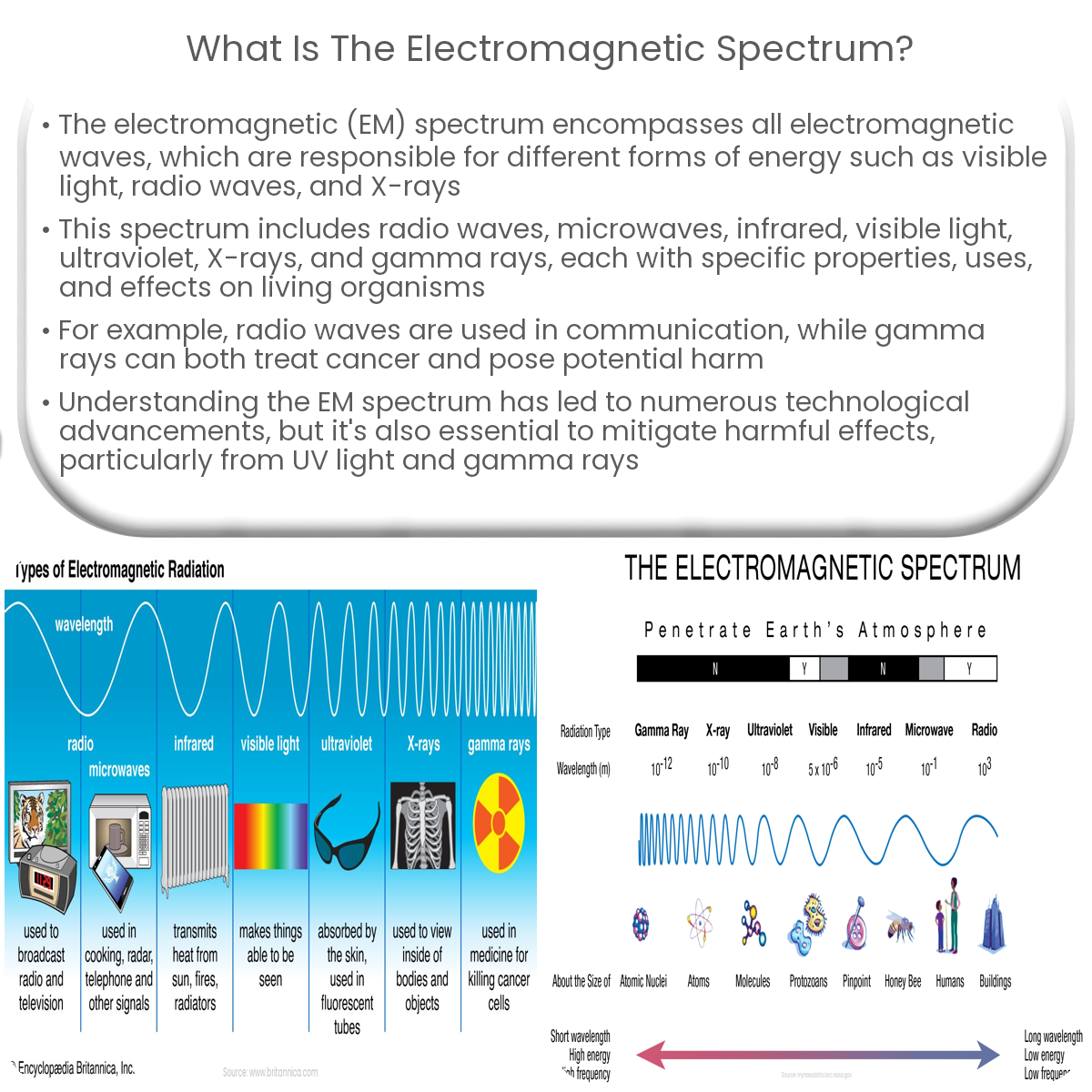The electromagnetic (EM) spectrum is a continuum of all electromagnetic waves, which are oscillating electric and magnetic fields that propagate through space.
Understanding the Electromagnetic Spectrum
The electromagnetic (EM) spectrum is a continuum of all electromagnetic waves, which are oscillating electric and magnetic fields that propagate through space. These waves vary in frequency and wavelength, and are responsible for various forms of energy that we encounter daily, such as visible light, radio waves, and X-rays.
The Components of the Electromagnetic Spectrum
- Radio waves: With the longest wavelength and lowest frequency, radio waves are used in various communication systems, such as television, radio broadcasting, and satellite transmissions.
- Microwaves: With shorter wavelengths than radio waves, microwaves are used for wireless communication, cooking, radar systems, and global positioning systems (GPS).
- Infrared: Infrared waves are primarily emitted as heat radiation and are used in thermal imaging, night vision equipment, and remote control devices.
- Visible light: The only part of the spectrum visible to the human eye, visible light allows us to see colors and is crucial for photosynthesis in plants.
- Ultraviolet (UV) light: With shorter wavelengths than visible light, UV light can be harmful to living organisms, but is also beneficial in small doses, helping the body produce vitamin D.
- X-rays: With even shorter wavelengths, X-rays are used in medical imaging and can penetrate through tissues and bones, allowing for non-invasive diagnostics.
- Gamma rays: With the shortest wavelengths and highest frequencies, gamma rays are emitted by nuclear reactions, supernovae, and other high-energy events in the universe. They are used in cancer therapy, sterilizing medical equipment, and studying distant astronomical objects.
Applications and Implications
Understanding the electromagnetic spectrum has enabled countless technological advancements and improved our daily lives. However, exposure to certain types of EM radiation, such as UV light and gamma rays, can be harmful to living organisms. As such, it is crucial to develop technologies that mitigate these harmful effects, while also harnessing the benefits of EM waves.
Conclusion
In summary, the electromagnetic spectrum is an essential concept in physics and encompasses all forms of electromagnetic waves, including radio waves, microwaves, infrared, visible light, ultraviolet, X-rays, and gamma rays. Each component of the spectrum has its unique properties and applications, shaping our understanding of the universe and paving the way for technological advancements.


